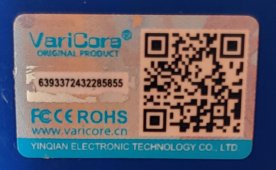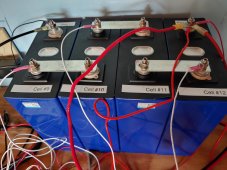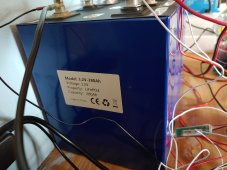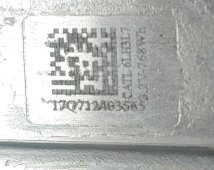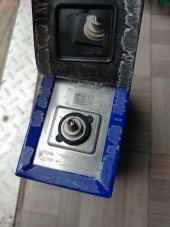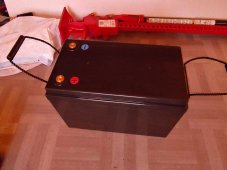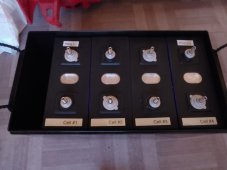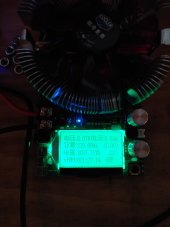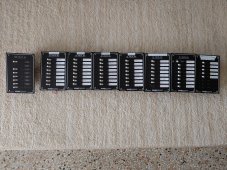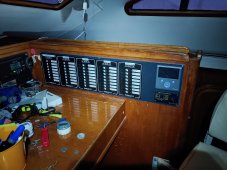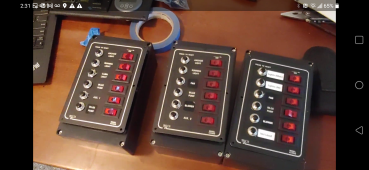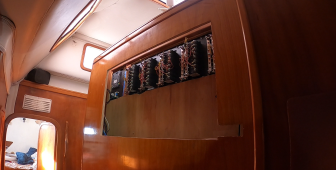manly
New Member
- Joined
- Jun 23, 2021
- Messages
- 49
This thread is for logging the journey of installing a DIY lifepo4 bank on our 39' cat which I'm fitting out to be off-grip electrically. As far as builds go, this is fairly vanilla. But perhaps it will be of interest to someone and, in any extent, I can refer back to it in the future.
This post will recap what has been done so far and give an introduction to my philosophy.
First, why DIY? Why not drop-ins? Cost is definitely an issue. But more than that, even if drop-ins were handed to me (which in fact they were, Qty 10 perfectly good Battle Borns are in the boat now which I'm replacing), I still would prefer my DIY pack. Because I want to know how it works and is setup. What assumptions went into the battery builds. And I can check the cell health of each cell. Even more importantly, at the end of this project I'll be far better equipped to troubleshoot and fix a problem when/if it arises. If I'm off-grid in a remote island chain and my drop-in batteries give me trouble, I won't have the skills, knowledge, or even tools to be equipped to fix them. Additionally, I would like the batteries to have internal heaters which mine currently do not.
It is unfortunate that LiFePo4 is so finicky. The Pros in why they are advantageous, and for what I'm trying to do on 12v, pretty much essential. (i.e. run air conditioning, piston pump water maker, washing machine, hot water heater, etc.) However, the cons are increased complexity to manage (temperature, over/under voltage protection, etc). Complexity is never good on a boat. But if we must have it, at least I want to understand it as much as possible.
Ok, onwards to the details:
I purchased 16 cells of the supposed Grade A variety from AliExpress. From the LiitoKala&VariCore Flagship Store, to be precise. These were 280ah 3.2v cells [note: in future posts I discover they actually shipped me 240ah cells]. Cost with shipping to Florida was $1754.50. Took about 3 months to arrive (purchased 2021), but they were well packaged and I didn't see any damage. So the bank is 1,120 amp-hours. My initial capacity tests show the batteries are not pulling the full rated 280ah each. I'm going to re-test with a Renogy shunt and try to get more definitive numbers. However, if I only end up with 1,000 amp hours, that is still an adequate bank for us.
I will say that sending $1700 to China via AliExpress for batteries is heartburn inducing. And waiting 3 months for them to arrive... definitely felt like a gamble.
The BMS's I'm using are Overkill Solar. Qty (4) of the 12v as I'll be making 4, 12v batteries. Cost of these BMS's with shipping was $607.76. The upside of Overkill BMS's is they appear exceedingly robust and conservative in design. One downside is the 12v model only supports 120amps current (charge or discharge) per BMS. This would be a deal breaker if I only had 1 or 2 batteries. But with 4, that yields 480 Ah discharge capacity, which is more than enough. And charging will be under 200 amps, so no issue there.
I toyed with the idea of 24v system, and even originally bought the Overkill Solar BMS's for 24v. But in the end, I wanted to keep things as simple as possible, so sold those and bought the 12v ones.
This post will recap what has been done so far and give an introduction to my philosophy.
First, why DIY? Why not drop-ins? Cost is definitely an issue. But more than that, even if drop-ins were handed to me (which in fact they were, Qty 10 perfectly good Battle Borns are in the boat now which I'm replacing), I still would prefer my DIY pack. Because I want to know how it works and is setup. What assumptions went into the battery builds. And I can check the cell health of each cell. Even more importantly, at the end of this project I'll be far better equipped to troubleshoot and fix a problem when/if it arises. If I'm off-grid in a remote island chain and my drop-in batteries give me trouble, I won't have the skills, knowledge, or even tools to be equipped to fix them. Additionally, I would like the batteries to have internal heaters which mine currently do not.
It is unfortunate that LiFePo4 is so finicky. The Pros in why they are advantageous, and for what I'm trying to do on 12v, pretty much essential. (i.e. run air conditioning, piston pump water maker, washing machine, hot water heater, etc.) However, the cons are increased complexity to manage (temperature, over/under voltage protection, etc). Complexity is never good on a boat. But if we must have it, at least I want to understand it as much as possible.
Ok, onwards to the details:
I purchased 16 cells of the supposed Grade A variety from AliExpress. From the LiitoKala&VariCore Flagship Store, to be precise. These were 280ah 3.2v cells [note: in future posts I discover they actually shipped me 240ah cells]. Cost with shipping to Florida was $1754.50. Took about 3 months to arrive (purchased 2021), but they were well packaged and I didn't see any damage. So the bank is 1,120 amp-hours. My initial capacity tests show the batteries are not pulling the full rated 280ah each. I'm going to re-test with a Renogy shunt and try to get more definitive numbers. However, if I only end up with 1,000 amp hours, that is still an adequate bank for us.
I will say that sending $1700 to China via AliExpress for batteries is heartburn inducing. And waiting 3 months for them to arrive... definitely felt like a gamble.
The BMS's I'm using are Overkill Solar. Qty (4) of the 12v as I'll be making 4, 12v batteries. Cost of these BMS's with shipping was $607.76. The upside of Overkill BMS's is they appear exceedingly robust and conservative in design. One downside is the 12v model only supports 120amps current (charge or discharge) per BMS. This would be a deal breaker if I only had 1 or 2 batteries. But with 4, that yields 480 Ah discharge capacity, which is more than enough. And charging will be under 200 amps, so no issue there.
I toyed with the idea of 24v system, and even originally bought the Overkill Solar BMS's for 24v. But in the end, I wanted to keep things as simple as possible, so sold those and bought the 12v ones.
Last edited:




